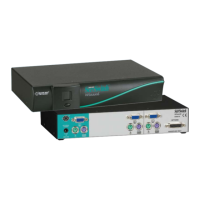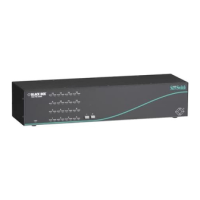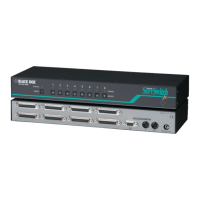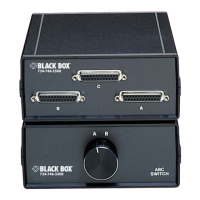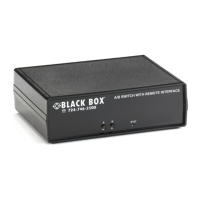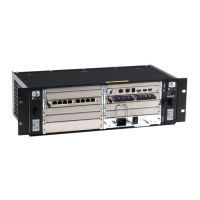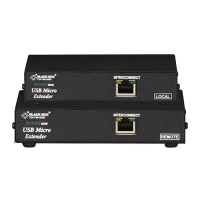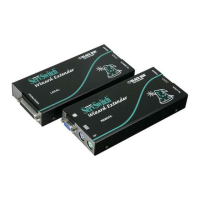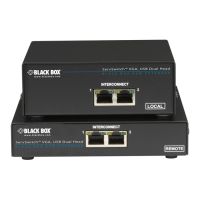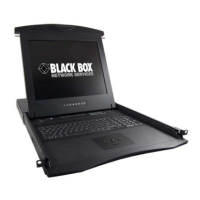84
MATRIX SERVSWITCH™
7. Using the Serial Ports
Each port board installed in the Matrix ServSwitch is equipped with an RS-232
serial port that you can use to:
• Configure the Switch;
• Flash-upgrade firmware, and send kernel and system upgrades to the entire
system; or
• Restore factory defaults.
7.1 Basic Setup: Establishing a Serial Connection
In order to access the serial ports of a Matrix ServSwitch, you’ll need these things:
• A straight-through-pinned, flat-satin or twisted-pair serial cable with modular
RJ-11 (4-pin) or RJ-12 (6-pin) connectors. (One of these is included with your
Switch.)
• An appropriate adapter. For IBM type computers and most terminals, either
DB25 female to RJ-12 female (product code FA044) or DB9 female to RJ-12
female (product code FA043), depending on your computer/terminal. (An
equivalent to the FA043 is included with your Switch.)
• A dedicated (not attached to the Matrix ServSwitch system) computer or
terminal. You must use a computer if you will be upgrading the Switch’s
firmware.
• If you are using a computer, you will also need a communications program
such as Windows HyperTerminal™.
To connect the adapter and cable, take these steps:
1. Connect the adapter to the serial port on your terminal or to one of the COM
ports on your computer. (If you are using a computer, the computer must not
be connected to the Matrix ServSwitch in any other way; do not run CPU
Cable between it and the Switch.)
2. Plug one end of the cable into the RJ-12 female connector on the adapter,
and the other end into the serial port on the Matrix ServSwitch. If you are
changing the system’s “starting computer” or “maximum computer” settings,
you must use the serial port of port board 1 (the bottom board that includes
CPU ports 1 through 4—see Section 7.2.1).
